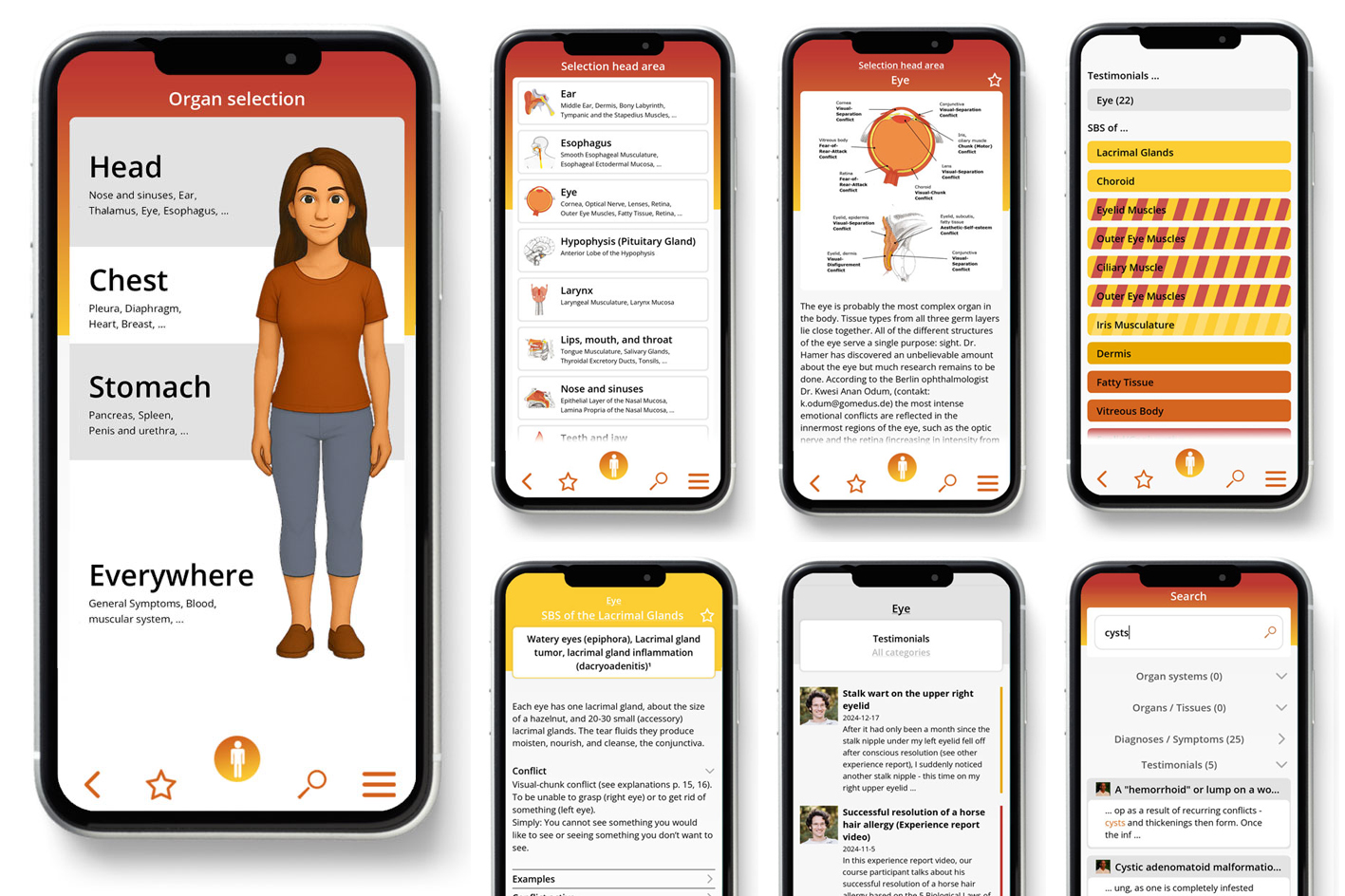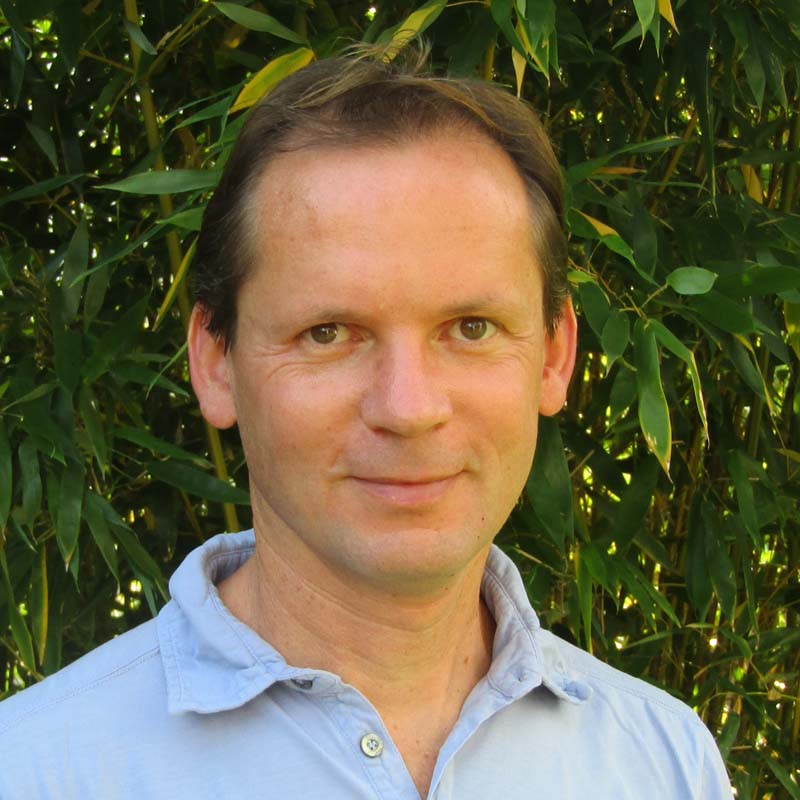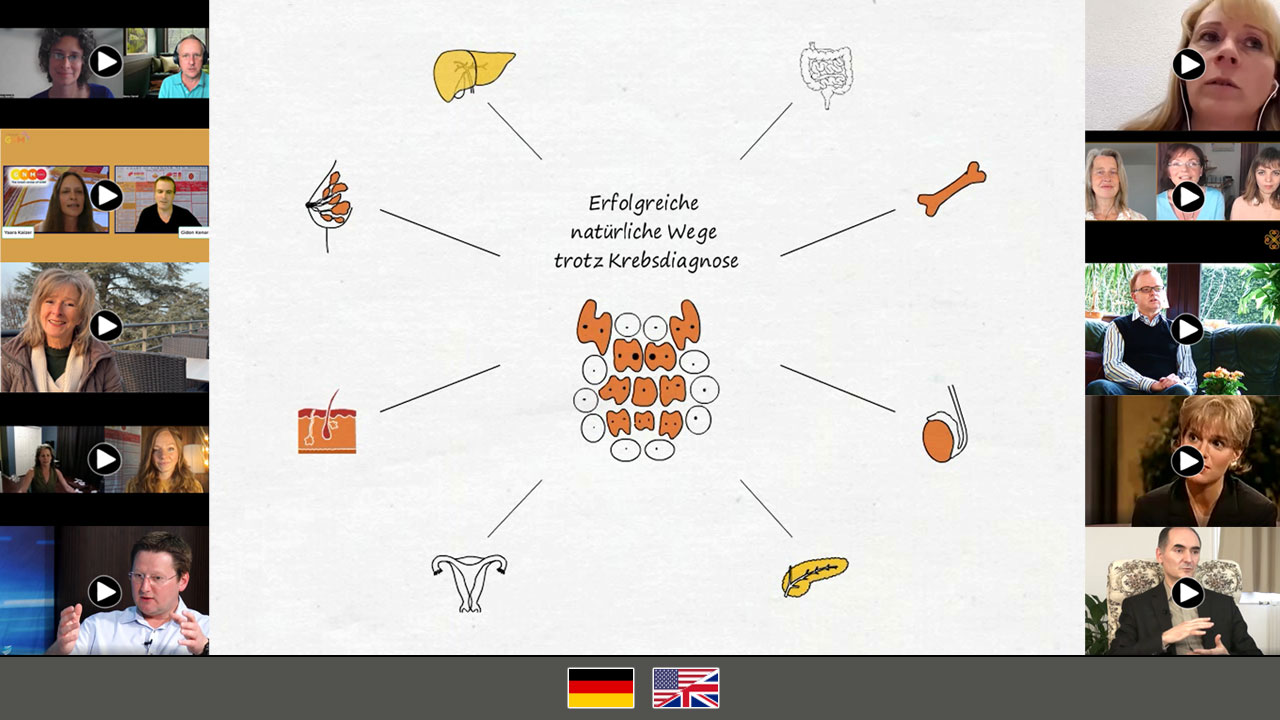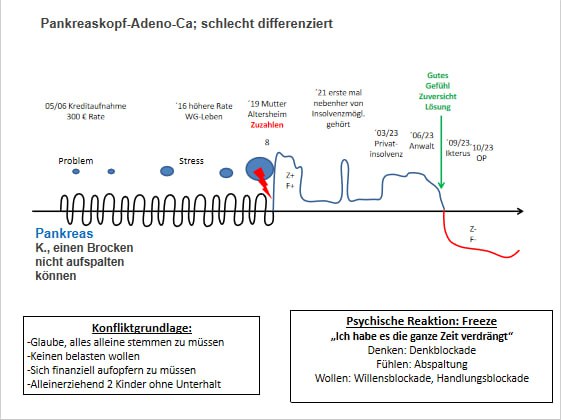 The information on this site is from one of the most famous books about the New Medicine (GNM / 5BN): "The Psychic Roots of Diseases" by Björn Eybl. Since September 2025, it is available in the form of an app with many additional features.
The information on this site is from one of the most famous books about the New Medicine (GNM / 5BN): "The Psychic Roots of Diseases" by Björn Eybl. Since September 2025, it is available in the form of an app with many additional features.It was written in german and was translated into more than 10 languages already. German is not freely available, as the rights are held by a publisher, but all these translations are available as ebooks / PDFs for free, as a gift of Björn for you, for the New Earth, for a new time.
In cooperation with Björn, it is splitted on "Disease is Different" into the sections by organ systems and combined with the real cases of our international testimonial / report archive of the related organ system.
PANCREAS
The fishhook-shaped pancreas lies transversely behind the stomach in the upper abdominal cavity. Its endodermal glandular tissue produces 1 to 1½ liters of digestive juice daily, which contains enzymes to break down fats, proteins and carbohydrates.
The ectodermal excretory ducts collect the juice and lead it into the duodenum (= exocrine gland function).
Embedded in the glandular tissue and strewn “like raisins in a cake“ are two kinds of ectodermal hormone glands (= the so-called pancreatic islets or islets of Langerhans) with two main types of cells:
- The alpha cells produce the hormone glucagon, which raises the blood sugar.
- The beta cells produce insulin, which lowers the blood sugar.
Both hormones are fed directly into the blood (endocrine gland function).
As we see below, the two sugar SBSs provided by nature should only function as short-term programs – in preparation for a fight or for flight.
In this context, they are both meaningful and helpful. Unfortunately, thanks to our habit of continuously lugging conflicts around throughout our modern lives, this meaning is totally lost.
Pancreatic Ducts
Territorial-anger
conflict
Pancreas – Parenchyma
Chunk conflict,
not being able to
utilize something

Pancreatic Islet – Alpha Cells
(glucagon)
Fear-disgust conflict
Pancreatic Islet –
Beta Cells (insulin)
Resistance conflict

Chronic hyperglycemia (CM‘s diabetes mellitus type 1)1
The hormone insulin sinks the blood sugar level and opens the floodgates to the muscles. With this SBS, the insulin production in the beta cells is uniformly lowered and thus, the level of sugar in the blood rises. In the muscles, however, the sugar level is reduced – a consequence of the decreased insulin production.
When glucose levels are high, sugar is also eliminated through the urine. (This explains the name: diabetes mellitus = honey-sweet flow). The beta cells are controlled by the right (male) side of the cerebral cortex.
| Conflict | Resistance conflict – pre-fight phase: One defends themselves against someone or something, but believes that they are not strong enough. One refuses someone (usually an authority) or a task (e.g., a certain job/work). One believes they have to fighting against something. One is forced to do something or completes something against their will. Less often, this is a female fear-disgust conflict (dependent on “handedness,” hormone levels, or previous conflicts). Explanation: The masculine reaction to adversity is defend, resist and then strike. Frauenkron-Hoffmann: cold conflict (ancestors froze to death, existential emergency due to cold, etc. |
|---|---|
| Examples | ➜ A person must do something he doesn‘t want to do (for example, go to kindergarten or to school). ➜ One is or feels compelled or coerced into something. ➜ One is faced with a superhuman task that must be accomplished at all costs. After the initial conflict, the affected person will often be run on this track for the rest of their life. ➜ I am confronted with an authority and I cannot resist it. (Dr. Claude Sabbah) ➜ I want attention, but I’m being tortured instead. Resistance conflict against an abusive authority doing disgusting things. (Dr. Claude Sabbah)  At the end of his political career, the former Italian Prime Minister Bettino Craxi was proven to have personal connections to the mafia. He was forced to face every imaginable kind of attack, while finding it difficult to justify himself = resistance conflict of not being able to defend oneself from accusations. As the pressure became too great, he fled to Tunisia but he found no peace there either, because he was constantly forced to defend himself in interviews = persistent-active conflict: reduced insulin production > increase in blood sugar = diabetes. Being on the run, caused him to suffer a refugee conflict (kidney collecting tubules). Massive fluid collection together with the diabetes then lead to his death in the year 2000. (See Claudio Trupiano, thanks to Dr. Hamer, p. 430) At the end of his political career, the former Italian Prime Minister Bettino Craxi was proven to have personal connections to the mafia. He was forced to face every imaginable kind of attack, while finding it difficult to justify himself = resistance conflict of not being able to defend oneself from accusations. As the pressure became too great, he fled to Tunisia but he found no peace there either, because he was constantly forced to defend himself in interviews = persistent-active conflict: reduced insulin production > increase in blood sugar = diabetes. Being on the run, caused him to suffer a refugee conflict (kidney collecting tubules). Massive fluid collection together with the diabetes then lead to his death in the year 2000. (See Claudio Trupiano, thanks to Dr. Hamer, p. 430)  Following the separation from her partner, a young, left-handed woman has difficulties getting him to provide financial support for their two children. She doesn‘t know what she can do other than threaten him with a lawsuit. However internally, she resists having to settle the matter in such an unpleasant manner = resistance conflict. (Archive B. Eybl) Following the separation from her partner, a young, left-handed woman has difficulties getting him to provide financial support for their two children. She doesn‘t know what she can do other than threaten him with a lawsuit. However internally, she resists having to settle the matter in such an unpleasant manner = resistance conflict. (Archive B. Eybl) |
| Conflict-active | Conflict–active In the pre-fight phase, one resists something = conflict activity. Now the insulin-producing beta-islet cells reduce their function > less insulin is released > increase in blood sugar levels (hyperglycemia, diabetes). However, the sugar is not yet brought to the muscles. This is in preparation for its imminent discharge (use in the fight). In practice, though, we are usually dealing with a persistent conflict here. Main symptoms: terrible thirst, increased urge to urinate, fatigue, weakness, problems concentrating. |
| Repair phase | Discharge = fight, flight or both: secretion of insulin > drop in blood sugar because the floodgates open into the muscles. > Large supply of glucose to the muscles for a fight – at least until the increased blood sugar level is depleted. In the second part of the repair phase it can come to the opposite reaction, i.e., a sugar level that is too low (hypoglycemia). |
| Bio. function | “Damming up“ the sugar in the blood (temporary reserve) for the coming fight. |
| Repair crisis | Attacks of extreme hyperglycemia. |
| Questions | When did the symptoms begin? (Conflict/trigger shortly before). What was I resisting against? (Bad situation, rebuke, being coerced)? What did I do even though I didn’t want to do it? Was I forced/pressured to do something? (Sexual, school, duty)? Blood sugar measurements: After/during which situations is the sugar high/low? (Indication of conflict activity, triggers and the solution respectively). Diabetes in the family? Yes > work out the family issue: Which parallels are there between the ones affected? (Similar fates)? What was the earliest conditioning? What sensitized me to this conflict? (Childhood, parental stress during the pregnancy, ancestral experiences)? Children: Likelihood of a substitution conflict. (Parent’s stress > child develops symptoms). Which advantages does the child have due to the difficulties the illness/convalescence presents? (Parents are worried, pay attention to the child because of the illness, the child is in the focus, receives privileges, has a special status at school)? What do I definitely want to change? |
| Therapy | Determine the conflict and/or trigger(s) and resolve them in real life if they are still active. If all else fails: CM insulin replacement therapy. However, one doesn’t have to get carried away here, because increased glucose levels only have negative effects over the long term. The insulin therapy leads to the body producing even less. A few weeks with a fasting blood glucose level of 300 mg/dl (normal value 100) is not a problem. Long-term, there is a need for treatment if values remain over 200 mg/dl. See also: remedies for diabetes p. 274. |
1 See Dr. Hamer, Charts p. 138
Hyperglycemia – other causes
- Stress without subsequent energy release: During periods of stress, the sugar level is raised through insulin reduction so that we can fight, flee or react optimally energetically. This is how it functions in humans and animals. The animal actually fights or flees and consumes the newly available sugar. Civilized human beings don‘t do the same. Sitting in our cars, we become angry and we only, at most, “flip the bird“ or raise a fist – and that‘s it. No action and no energy consumption. At our desks, it is the same; it is also the same at home in front of the television set. Hyperglycemia is a typical civilization conflict > stress without movement or exercise makes the blood sugar level rise.
- Overeating: The energy balance between intake and output does not add up correctly > overweight and hyperglycemia. This is not always the case, as not every overweight person has hyperglycemia; there is a tendency, however.
- Medications: Taking many different medications makes a person sympathicotonic and raises the blood sugar levels indirectly. Especially unfavorable are cortisones, catecholamines, antibiotics, etc. (see: p.68)
- Vaccinations: Conflictive by vaccination process + poisoning (see: p.70).
Insulin resistance
In CM, insulin resistance is considered a pre-stage/accompanying symptom of type 2 diabetes. However, the role of the adrenal cortex hormone cortisol is often overlooked (see p. 142f).
Cortisol raises blood sugar levels and is one of the most common substances counteracting insulin. I.e. in cases of insulin resistance, the (sufficiently produced) insulin is “neutralized” by cortisol > The insulin produced remains ineffective/blood sugar levels remain elevated.
Diagnosis/therapy
Determine blood cortisol levels > if elevated > no SBS of the pancreas, but an SBS of the adrenal cortex > conflict of having bet on the wrong horse. > Resolve the conflict (see: p.142f).
Gestational diabetes
• SBS of the pancreatic islet beta cells: resistance conflict, see: p.270.
• SBS of the adrenal gland (see insulin resistance or p. 142). Typical conflict situation in pregnant women. Doubts about having chosen the wrong partner, having taken the wrong path, not having had an abortion, and/or strife over how your life is ruined now.

Reduced blood sugar (hypoglycemia, hyperinsulinanemia)1
The hormone glucagon brings the sugar from the liver into the bloodstream and raises blood sugar levels.
With this SBS, glucagon production is reduced. > The sugar is not retrieved from the liver and therefore does not enter the bloodstream > low blood sugar levels. As opposed to the SBS of the beta cells, this SBS remains largely unrecognized. A low blood sugar level is rightly considered as not requiring treatment.
| Conflict | Fear-disgust conflict, towards someone or of something – one experiences something disgusting. Less often, this is a resistance conflict (dependent on “handedness,” hormone levels and previous conflicts). Explanation: The female response to adversity is fear and disgust. Traditionally, the male takes the way forward, opting to attack; the female behaves passively at first. The alpha cells are controlled by the left (female) cerebral cortex. Women usually react with fear, disgust or revulsion. |
|---|---|
| Examples | ➜ Somebody feels disgust or revulsion or is seized by sheer horror. ➜ “To shudder with horror.“ “To pull back with disgust.“ “That’s revolting!“ ➜ Horror of chemotherapy, a putrid wound, a badly injured person or disgust at one‘s own disfigurement (e.g., following an accident). ➜ Fear of certain animals: for example, spiders, beetles, snakes, mice, rats. ➜ A cleaning woman has to clean the filthy men‘s toilets = fear-revulsion conflict. Due to hypoglycemia, she is always hungry and becomes obese.  A 53-year-old mother of two grown sons has known her husband since her school days. At 16, she meets the father of her present husband. The encounter is a negative one because the patient finds the man repulsive from the beginning. At the same time, she suffers a territorial-anger conflict affecting the mucosa of the stomach. For years, she suffers from bulimia. Note: bulimia-constellation = fear-revulsion conflict + territorial-anger conflict affecting the mucosa of the stomach (see: p. 190f). (Archive B. Eybl) A 53-year-old mother of two grown sons has known her husband since her school days. At 16, she meets the father of her present husband. The encounter is a negative one because the patient finds the man repulsive from the beginning. At the same time, she suffers a territorial-anger conflict affecting the mucosa of the stomach. For years, she suffers from bulimia. Note: bulimia-constellation = fear-revulsion conflict + territorial-anger conflict affecting the mucosa of the stomach (see: p. 190f). (Archive B. Eybl) |
| Conflict-active | Conflict–active Reduced functioning of the alpha cells (CM‘s “glucagon insufficiency“), hypoglycemia, ravenous appetite, cold sweat, shivering, pale skin, feeling of walking on air, concentration and consciousness disturbances, possibly headache. With permanent conflict activity: weight problems (constant hunger). Psychological tendency: defensive attitude, one keeps things or people at a distance, compulsive cleanliness (cleaning mania). |
| Repair phase | Fear, disgust or rejection is overcome > production of glucagon is ramped up > release of sugar from the liver > normalization of blood sugar. Usually a recurring–conflict. |
| Bio. function | 1. Through increased sugar intake (sugar cravings) and the storage of sugar in the liver during the conflict-active phase, the sugar depot is well stocked. This provides a lot of energy for subsequent action (escape or retreat). 2. Loss of consciousness is the most extreme form of passivity (“playing dead”). The individual withdraws itself from reality. |
| Repair crisis | Brief, sharp drop of the blood sugar level, afterwards, there can be a slow rise in blood sugar. |
| Questions | When did the symptoms begin? What disgusts me from the time in question until today? (Adverse living conditions, job, being pressured by one’s partner)? Which beliefs and conditioning are the cause? |
| Therapy | Identify the conflict and conditioning and, if possible, resolve them in real life. Find out where the love is, you will find the solution there. In acute cases inject glucagon intravenously. It is better, however, to supply sugar orally (dextrose, fruit juice). See also: remedy for diabetes p. 274. |
Binge eating disorder (BED)
Same SBS as above. In CM, bouts of binge eating are considered as purely a psychological disorder.
Now, we understand the organic background (see above).
It is nevertheless true that the binges express an inner deficiency (recognition, love).
Elevated, strongly fluctuating blood sugar (CM‘s diabetes mellitus type 1 or 2)
| Conflict | Fear-disgust conflict of someone or something and at the same time a resistance conflict – to defend oneself against someone or something. = Combination of hyper- and hypoglycemia. Both SBSs described above are active. |
|---|---|
| Example |  From an early age, the youngest of three children fully notices the daily quarrels of his parents. The father “explodes“ regularly because the mother “irritates“ him. At such times, the father sometimes becomes violent = resistance and fear-disgust conflict according to a CT. The, now, 41-year-old is diagnosed with diabetes at the age of 12. Even now, the blood sugar rises sharply when there is an argument between people who are close to one another (= trigger). The patient stubbornly refuses insulin therapy. However, he finds that his wounds heal badly when his sugar is high = indication of the damaging effects of hyperglycemia. In the last two years, he has been able to keep his blood sugar levels between 140 and 100 through weight reduction, physical exercise, and altered diet. The old wounds have healed. (Archive B. Eybl) From an early age, the youngest of three children fully notices the daily quarrels of his parents. The father “explodes“ regularly because the mother “irritates“ him. At such times, the father sometimes becomes violent = resistance and fear-disgust conflict according to a CT. The, now, 41-year-old is diagnosed with diabetes at the age of 12. Even now, the blood sugar rises sharply when there is an argument between people who are close to one another (= trigger). The patient stubbornly refuses insulin therapy. However, he finds that his wounds heal badly when his sugar is high = indication of the damaging effects of hyperglycemia. In the last two years, he has been able to keep his blood sugar levels between 140 and 100 through weight reduction, physical exercise, and altered diet. The old wounds have healed. (Archive B. Eybl) |
| Phase | Switching of the conflicts and phases. A combination of both SBSs, depending on which conflict is stronger at a given time, hyper- or hypoglycemia results, fluctuating values due to a “mixing“ of the two conflicts. |
| Therapy | Identify the conflict and conditioning and, if possible, resolve them in real life. See also remedies for diabetes p. 274. When all else fails: CM insulin replacement therapy. |
1 See Dr. Hamer, Charts p. 143
Adult-onset diabetes mellitus (diabetes mellitus type 2)
• It can come to adult-onset diabetes when the fear-disgust conflict of the alpha cells switches to the other side of the brain due to changes in hormones and activates the relay of the beta cells. (See the map of the cerebral cortex p. 17). A problem of low blood sugar suddenly turns into one of high blood sugar. This also explains why overweight people are consistently diagnosed with adult-onset diabetes. Many overweight people are actually overweight because of constant low blood sugar and the constant hunger they have as a result (see: p.272). The constant hunger is a habit that accompanies the switch and for this reason, diabetes mellitus type 2 can be diagnosed.
• The second possibility of contracting adult-onset diabetes is when one suffers a resistance conflict at an older age that remains active. > Raised blood sugar levels (see: p.270).
Summary of blood sugar and diabetes
As a rule, diabetes is a persistent, active conflict.
CM claims that diabetes causes vascular damage (retinal vessels, diabetic foot). The fact of the matter is that glucose not reaching tissue is what causes damage. Regardless – in cases of long-term, elevated blood sugar, there is a need for treatment, to lower the glucose levels through conflict resolution, changes in lifestyle and diet or with medication (insulin). The last measure needs to be considered very carefully: The longer one receives insulin therapy, the more dependent one becomes on it – the islet cells’ function decreases with time > insulin dependence increases. If insulin therapy is necessary, try to work with as small a dose as possible.
- Guiding principles: “Either I do it right or I don‘t do it at all.“ “I’ll do it my own way and the decision is mine alone.“ “Stress cannot touch me.“
- The most important remedy is regular exercise, preferably moderate endurance sports outdoors. In this way, the biological purpose is fulfilled and the muscle burns sugar. However, if the resistance conflict has to do with sport itself, then sport is not good because it would lead to conflict-activity, which would make the blood sugar go up.
- Avoidance of simple starches such as white flour, sugar etc.
- Biologically complete foods, such as all kinds of beans, lentils, strawberries, oats, potatoes, carrots, Jerusalem artichokes, asparagus, horseradish, supplement vitamin D, chromium.
- Cod liver and flaxseed oil, hydrogen peroxide (H2O2).
- Cayce: Eat Jerusalem artichoke often (contains insulin).
- Teas: fenugreek, burdock root, elderberry, golden cinquefoil.
- Possibly petroleum-cure (see p. 68), learn deep breathing.

Pancreatic cancer (pancreatic adeno-ca, serous cystademona, acinar cell ca)1
According to CM, this is one of the deadliest cancers. This negative prognosis, coupled with CM treatment, leads to the death of the vast majority of patients. This is not necessary.
| Conflict | Chunk conflict (see explanations p. 15, 16)), a gain or income cannot be realized, inheritance or property conflict, disagreement among family members, fight over money or possessions. According to Frauenkron-Hoffmann: Something monstrous has taken place. Outrage/indignation of others about one’s own behavior or one’s own outrage/indignation about the behavior of others (e.g., caused by a family feud). |
|---|---|
| Examples | ➜ Someone cannot incorporate something that they would like to have. ➜ Something is taken away from someone or somebody loses something that means a lot to him. ➜ One cannot realize or accept something unexpectedly, often in connection with their family.  In his book, “Was Gesund Macht” (see bibliography), Johannes F. Mandt describes his battle with pancreatic cancer and the cause of the conflict: “…I had been separated (from his wife) for eight years. In March 2002, I filed for divorce. At the end of October 2002, I received a letter from my wife‘s lawyer. It contained – among other things – two demands, which completely surprised me. I was caught completely off guard. From that moment on, I could think of nothing other than these new demands. By November, I always had cold hands and feet…the cold was always there, even in bed at night. I lost my appetite.“ (= Conflict–active phase. Mr. Mandt recovered well from it all). In his book, “Was Gesund Macht” (see bibliography), Johannes F. Mandt describes his battle with pancreatic cancer and the cause of the conflict: “…I had been separated (from his wife) for eight years. In March 2002, I filed for divorce. At the end of October 2002, I received a letter from my wife‘s lawyer. It contained – among other things – two demands, which completely surprised me. I was caught completely off guard. From that moment on, I could think of nothing other than these new demands. By November, I always had cold hands and feet…the cold was always there, even in bed at night. I lost my appetite.“ (= Conflict–active phase. Mr. Mandt recovered well from it all). The manager of a wellness spa appoints a substitute. Unfortunately, she turns out to be unsuitable. She talks a lot and leaves her work undone. The patient gets angry every time she walks past this woman’s workspace = anger conflict with family members. (The manager considers her employees to be her family). On her colleague‘s last day, the patient says to herself, “Thank God. Tomorrow I won‘t have to look at her any more.“ = Conflict resolution and beginning of the repair phase. This is followed by vomiting and chills (repair phase crisis). The patient overcomes it all well, thanks to her knowledge of how everything is connected. (See Gisela Hompesch, Meine Heilung von Krebs durch das Goldene Buch von Dr. Hamer). The manager of a wellness spa appoints a substitute. Unfortunately, she turns out to be unsuitable. She talks a lot and leaves her work undone. The patient gets angry every time she walks past this woman’s workspace = anger conflict with family members. (The manager considers her employees to be her family). On her colleague‘s last day, the patient says to herself, “Thank God. Tomorrow I won‘t have to look at her any more.“ = Conflict resolution and beginning of the repair phase. This is followed by vomiting and chills (repair phase crisis). The patient overcomes it all well, thanks to her knowledge of how everything is connected. (See Gisela Hompesch, Meine Heilung von Krebs durch das Goldene Buch von Dr. Hamer). |
| Conflict-active | Conflict–active Increase in function or growth of a cauliflower-like tumor of secretory quality – usually unnoticed. Slight increase in amylase, lipase and CA 19-9, CA 50 and CEA in the blood (see: p.45). |
| Bio. function | With more pancreatic tissue, more pancreatic enzymes can be produced in order to digest food better. When we do not get something (for example an inheritance) that we had been counting on, nature sees that what we have is better utilized by producing additional cells. |
| Repair phase | Normalization of function, tubercular, caseating degradation of the tumor, empty spaces (caverns) or calcium deposits can remain in the tissue; pain, mild fever, night sweats, possibly diarrhea; if no suitable bacteria are present, the tumor is encapsulated with connective tissue and isolated from participating in metabolic functions. Usually a recurring conflict. |
| Repair crisis | Chills, severe pain |
| Questions | Which issue could/can I not digest? From what was I unable to extract the benefit I expected? What outraged me? What conditioned me in this direction? (Childhood, the way the parents think, experiences of my ancestors)? Which beliefs enabled this conflict? (E.g., “I am entitled to my inheritance,” fanatical righteousness)? What meaning might the diagnosis have for my direction in life? (Reorientation, contemplation about the meaning of life)? Am I ready to make a new start? |
| Therapy | Identify the conflict and/or trigger(s) and, if possible, resolve them in real life if they are still active. Absolute bed rest, so that the tuberculosis can heal. Surgery if necessary – if the tumor has grown too large – without chemo or radiation of course. Unfortunately, a surgeon rarely dares to operate under these conditions. See also: remedies for the pancreas. |
Inflammation of the pancreas (pancreatitis, exocrine pancreas insufficiency)
Same SBS as above.
| Phase | Recurring–conflict or persistent repair: excessive degradation of the glandular tissue, under-production of enzymes > digestive problems such as bloating/flatulence, fatty stool and diarrhea due to enzyme deficiency – moderate pain, bloated abdomen. |
|---|---|
| Therapy | Identify the conflict and/or trigger(s) and, if possible, resolve them in real life if they are still active. Low-fat diet, possibly substitute enzyme with pancreatin or enzyme-rich diet. See also: remedies for the pancreas. |
1 See Dr. Hamer, Charts p. 23

Cancer of the pancreatic ducts (pancreatic ductal/intraductal cancer)1
| Conflict | Territorial-anger conflict or, less often, identity conflict (dependent on “handedness,” hormone levels and previous conflicts). One is angry that the boundaries of the territory are disrespected. |
|---|---|
| Examples | ➜ Often, conflict arising either from oneself or from an opponent. ➜ Conflict with colleagues or family members, overstepping of the boundaries by the neighbor, arguing over money.  Twenty-five years ago, a now 50-year-old manager married a woman who always made it clear to him that he was not the one she actually loved . The woman has always excluded him from the raising of their daughter, now 20 years old. He feels like a 5th wheel = territorial-anger conflict affecting the pancreatic duct > widening of the duct in the active–phase. Two years ago, he divorced his wife. The mother and daughter accused him of having deserted them. Luckily, he soon met another woman, who gave him the love he always longed for. Two months ago, his daughter suddenly approached him. She told him that her relationship with her mother was like a prison for her = conflict resolution > the abdomen swells up and is sensitive to pressure = cancer of the pancreatic duct. One weekend, he is admitted to the hospital because of colicky pains = repair phase crisis. His amylase and lipase levels are far above the norm. His gallbladder is unnecessarily removed. (Archive B. Eybl) Twenty-five years ago, a now 50-year-old manager married a woman who always made it clear to him that he was not the one she actually loved . The woman has always excluded him from the raising of their daughter, now 20 years old. He feels like a 5th wheel = territorial-anger conflict affecting the pancreatic duct > widening of the duct in the active–phase. Two years ago, he divorced his wife. The mother and daughter accused him of having deserted them. Luckily, he soon met another woman, who gave him the love he always longed for. Two months ago, his daughter suddenly approached him. She told him that her relationship with her mother was like a prison for her = conflict resolution > the abdomen swells up and is sensitive to pressure = cancer of the pancreatic duct. One weekend, he is admitted to the hospital because of colicky pains = repair phase crisis. His amylase and lipase levels are far above the norm. His gallbladder is unnecessarily removed. (Archive B. Eybl) |
| Conflict-active | Conflict–active Increase in the sensibility of the great pancreatic duct (ductus pancreaticus) or its small branches, simultaneous slackening of the smooth ring musculature. Later, cell degradation (ulcer). Moderate pain. |
| Bio. function | Through the widening of the pancreatic ducts (= lumen enlargement) the pancreatic fluids can reach the duodenum quicker and easier. |
| Repair phase | Restoration of the “thinned out“ passageways due to increased metabolism = inflammation, repair of the lost substance = inflammation of the pancreas (pancreatitis). Healing swelling can temporarily block the flow > rise in the levels of the pancreatic enzymes (amylase and lipase) in the blood; syndrome aggravates the symptoms. At the end of the repair phase, the ducts open up again > normalization of values, the pancreatic ducts can remain altered by scarring (fibrosis), bulges and/or narrowing and possibly pancreatic stones. Often a recurring–conflict. |
| Repair crisis | Painful pancreas colic = cramp attack of the duct muscles, chills. |
| Questions | First, based on the symptoms, determine if the SBS is in the repair phase, is active or recurring. When did the repair symptoms begin? (Usually at the point of conflict resolution). What was I unable to endure before this? Which territorial stress was there? What pressured me? What are the deeper causes of the conflict? (Conditioning in childhood, parents’ experiences)? What beliefs/belief systems should I throw overboard? |
| Therapy | In the case it is recurring: Determine and resolve the conflict, causal conditioning and beliefs. Find out where the love is – there you’ll find the solution. Possibly anti-inflammatory or antipyretic medications. See also: remedies for the pancreas below. |
1 See Dr. Hamer, Charts p. 117
Acute inflammation of the pancreas (pancreatitis)
Possible causes
- Inflammation of the glandular tissue of the pancreas
Repair phase: tubercular, caseating degradation of tumor tissue (pancreas tuberculosis), belt-like abdominal pain, swollen, pressure sensitive “rubber belly,“ flatulence, nausea, vomiting, elevation of the pancreatic enzymes amylase and lipase in the blood and urine, fever, night sweats (see: p.274).
- Inflammation of the pancreatic ducts: Repair phase: repair of the squamous epithelium, colicky pain in the repair phase crisis (p. 275).
How to tell the difference
• Strong smelling, possibly stinking night-sweats only with pancreas–tuberculosis. Due to inflammation of the pancreatic glandular tissue, pain from the beginning to the end of the repair phase.
- In the case of an SBS of the pancreatic duct, pulling pain in the conflict–active phase without signs of inflammation, colicky pains in the repair phase crisis.
Therapy
The conflict is resolved. Support the repair phase, avoid recurrences. Depending on the intensity of the inflammation: painkillers, infusions etc.
- Eat organic food, especially Jerusalem artichoke.
- Teas: mistletoe, centaury, fennel, peppermint.
- Cayce: treatment with dehydrated castor oil.
- Bach flowers (see p. 59): chicory, heather.
- Pancreatin enzyme supplement therapy, if necessary.
- Zeolite powder internally.
- Kanne Bread Drink.
- Cod liver oil (see p. 68).
All experience reports on the organ system « Pancreas » from the International Report Archive:
| Author | Title and Overview | Keywords | ||||
|---|---|---|---|---|---|---|
 | 2025/10/24   A mother's peritonitis and pancreatitis following her newborn son's serious illness. | Tackling aggression, attacking the abdomen | ||||
2025/03/24   This documentary presents 15 individuals who were diagnosed with cancer by conventional medicine and who examined the causes of their symptoms according to the model of the so-called 5 Biological Laws of Nature and overcame them.  | Colon cancer, bone cancer, breast cancer, skin cancer, testicular cancer, pancreatic cancer, cervical cancer | |||||
 | 2025/03/06   The client solved a bristle conflict that triggered diabetes 1. | Bristle conflict | ||||
 | 2024/06/27   About 8 years ago, I received a letter from the IRS/tax office with a 5-figure tax arrears payment, even though my finances are managed by a tax consultant. I didn't have the money at the time and it caught me unawares. However, I was already familiar with the topic of GNM at the time. I had obsessive thoughts: how was I going to cope? | |||||
2023/11/23   Background: The 66 year old woman was left by her husband and had 2 children. As a single parent, she wanted to maintain the standard of living for the children from 2005/06 and took up a loan. The rate was 300 € per month. Over the years, the rate increased and she took up even more credit in the meantime. She knew that it was all too much for her, but she always blocked it out. ...  | ||||||
 | 2023/05/19   "In November 2002 I began to have upper abdominal discomfort. It was a pulling, stabbing pain. At first I mistook the pain for an upset stomach and tried to do my work as usual. But within a few days the problems increased..." This report was first published on internet by Johannes F. Mandt on the website of the Kopernikus e.V. association. | |||||
 | 2023/04/10   When the PLANdemie was announced on Swiss television in March 2020, I knew immediately that it was a lie and a scam. My key sentence was: “They want to sell us the vaccine.” That was the start of the agitation and mistrust against me ... |
